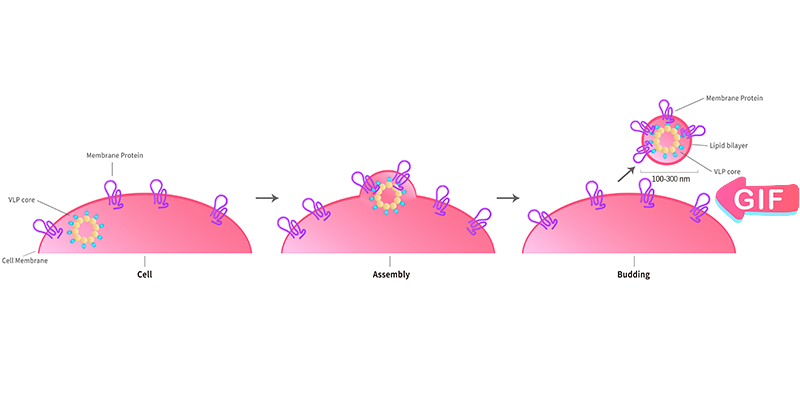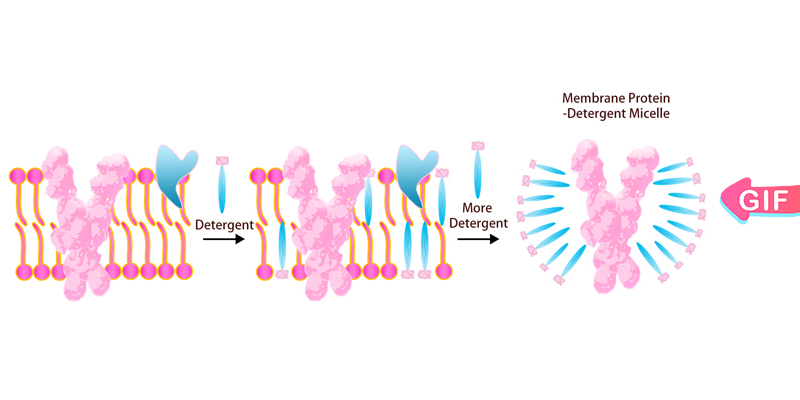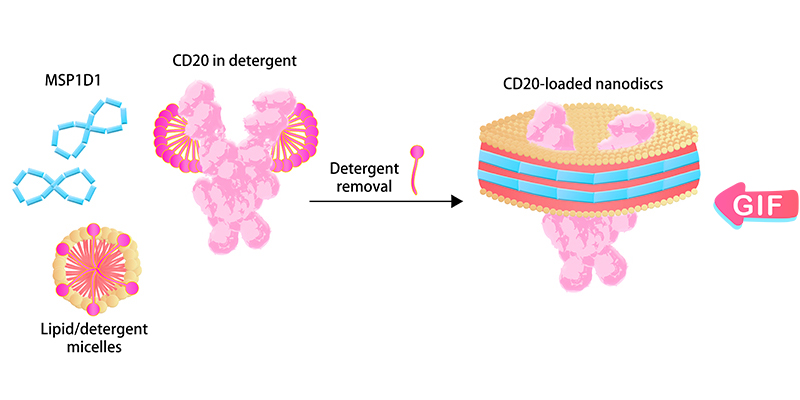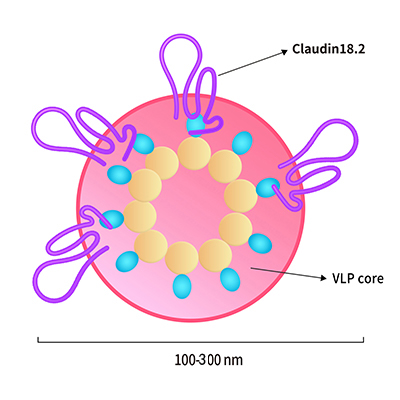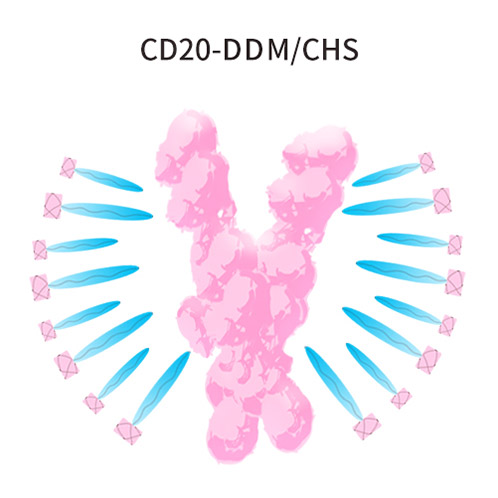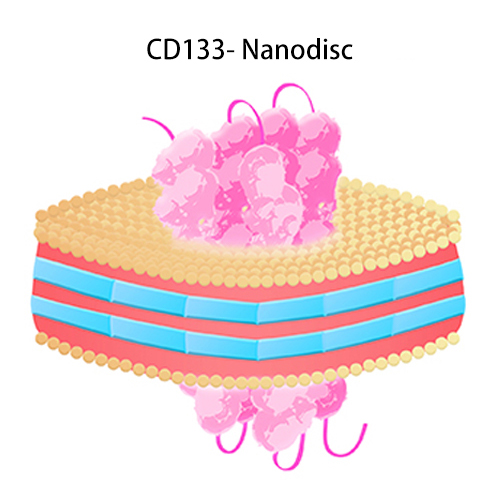





























 Limited Edition Golden Llama is here! Check out how you can get one.
Limited Edition Golden Llama is here! Check out how you can get one.  Limited Edition Golden Llama is here! Check out how you can get one.
Limited Edition Golden Llama is here! Check out how you can get one.
 Offering SPR-BLI Services - Proteins provided for free!
Offering SPR-BLI Services - Proteins provided for free!  Offering SPR-BLI Services - Proteins provided for free!
Offering SPR-BLI Services - Proteins provided for free!
 Thank you for choosing ACROBiosystems. Would you rate our product and service?
Thank you for choosing ACROBiosystems. Would you rate our product and service?  Thank you for choosing ACROBiosystems. Would you rate our product and service?
Thank you for choosing ACROBiosystems. Would you rate our product and service?
 Here come GMP Grade Cytokines!Free Sample is available!
Here come GMP Grade Cytokines!Free Sample is available!  Here come GMP Grade Cytokines!Free Sample is available!
Here come GMP Grade Cytokines!Free Sample is available!
> 複数回膜貫通型標的タンパク質の開発プラットホーム
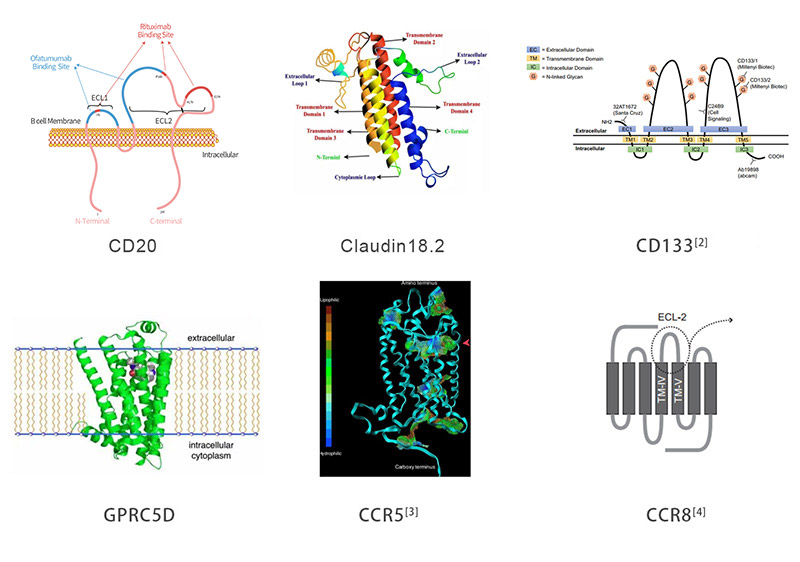
弊社はHEK293の発現システムに基づき、VLPテクノロジープラットホームを作っています。このプラットホームを用いて、完全なコンフォメーションを持っている膜タンパク質を細胞の表面に集合させ、抗体免疫とスクリーニングに利用できるよう、複雑な構造の膜タンパク質を可溶で高濃度のタンパク質に変えます。作られたエンベロープVLPsは細胞膜上に正しく折りたたまれた複数回膜貫通型タンパク質を提示し、それによって標的になる天然コンフォメーションを識別する抗体を誘導し、スクリーニングできます。 VLPテクノロジープラットフォームによって製造される通常の複数回膜貫通型タンパク質以外にも、弊社はカスタマイズサービスも承っております。
複数回膜貫通型タンパク質の膜貫通領域は疎水性が高く、通常のバッファーの中で正しいコンフォメーションを維持することは困難です。可溶化剤を使うことでそれを解決できます。弊社は昆虫細胞と哺乳類細胞の発現技術をもとにして、開発が困難な医薬品に使う標的膜貫通型タンパク質の発現、精製プラットホームを構築し、よく使われている可溶化剤の中からDDM / CHS(製品番号DC-11)などの効果の良いタイプを選別しました。それによって複数回膜貫通型標的タンパク質の可溶性を大幅に向上させ、天然のコンフォメーションの形成を促進しました。
ナノディスク(Nanodisc)は膜足場タンパク質(MSP)とリン脂質分子で構成されたリン脂質二重膜構造です。膜タンパク質をナノディスクの特殊な構造に挿入できます。生物活性が保て、可溶性も良好なので、よく利用されています。弊社の研究開発チームが様々な努力をし、工業化のスケールアップ生産に適しているNanodiscのアセンブリプロセスに成功し、膜貫通型タンパク質Nanodisc製品を長期的かつ安定的に提供できます。
VLP
膜タンパク質-可溶化剤
Nanodisc
| 分子 | 製品番号 | 製品説明 | 用途 | 注文/予約注文 |
|---|
| 分子 | 製品番号 | 製品説明 | 用途 | 注文/予約注文 |
|---|
| 分子 | 製品番号 | 製品説明 | 用途 | 注文/予約注文 |
|---|
ご参考にELISA&SPRによるデータや実験方法を無償で提供しております。必要な方はクリックしてプロトコルをお申し込みください。
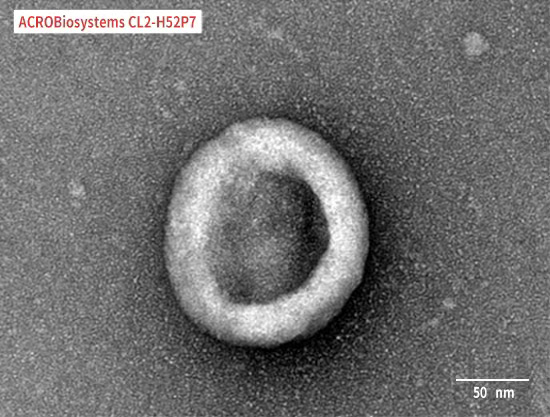

Immobilized Human Claudin-18.2 Full Length Protein-VLP (Cat. No. CL2-H52P7) at 5 μg/mL (100 μL/well) can bind Monoclonal Anti-Chimeric Claudin-18.2 Antibody, Human IgG1 with a linear range of 0.2-3 ng/mL (QC tested).
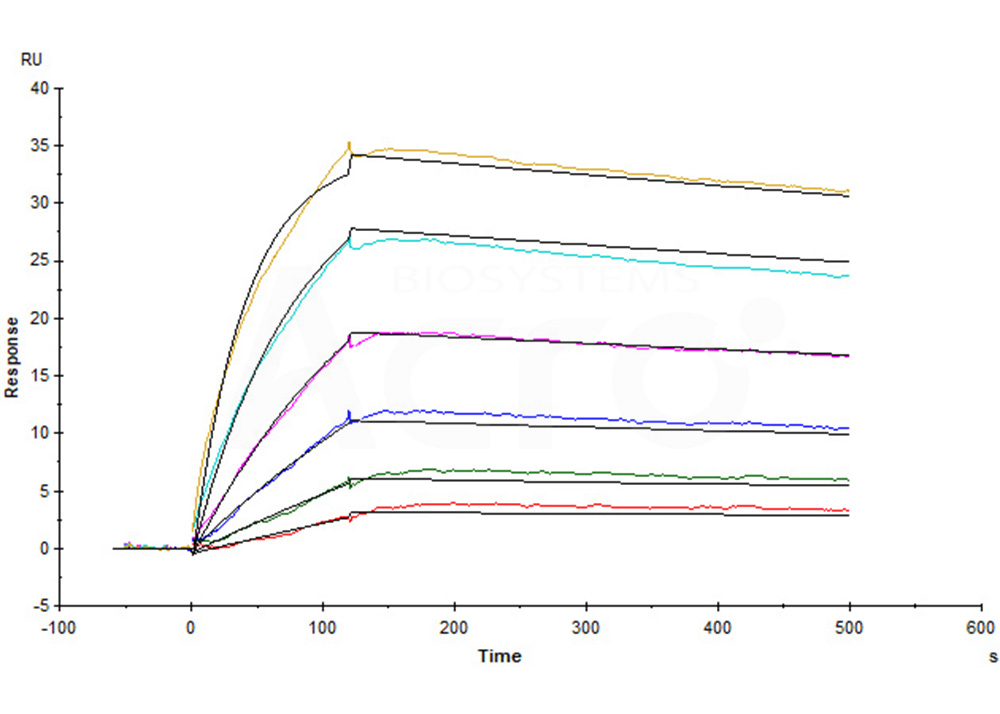
Human Claudin-18.2 Full Length Protein-VLP (Cat. No. CL2-H52P7) captured on CM5 Chip via Anti-Claudin-18.2 antibody can bind Anti-Claudin-18.2 antibody with an affinity constant of 0.374 nM as determined in a SPR assay (Biacore T200) (Routinely tested).
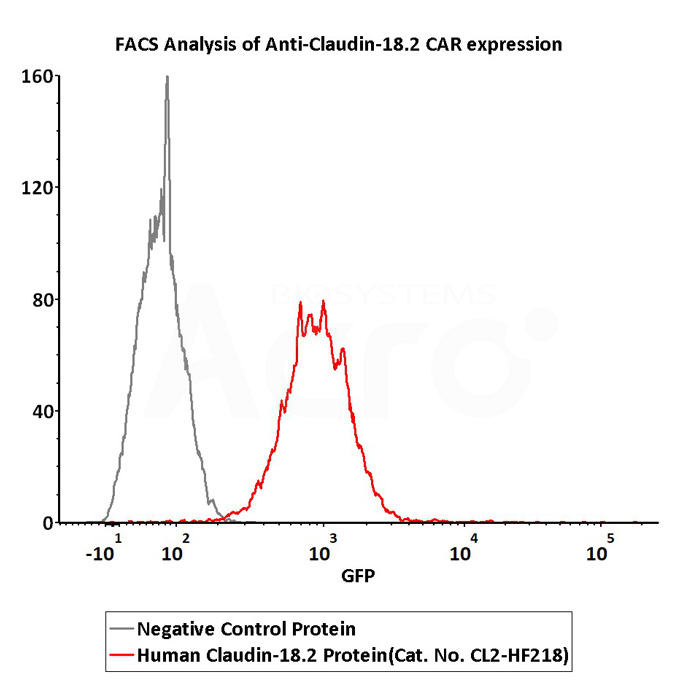
2e5 of Anti-Claudin-18.2 CAR-293 cells were stained with 100 μL of 3 μg/mL of Fluorescent Human Claudin-18.2 Full Length Protein-VLP (Cat. No.CL2-HF218) and negative control protein respectively, FITC signals was used to evaluate the binding activity (QC tested).
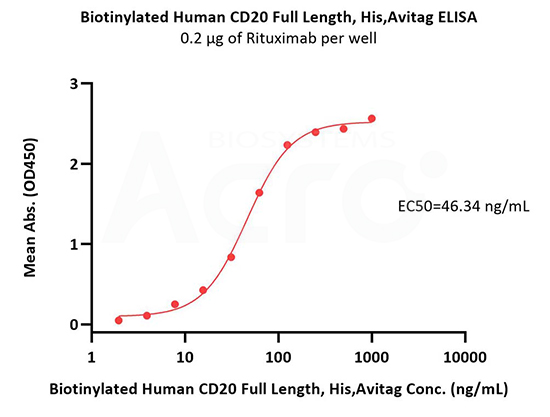
Immobilized Rituximab at 2 μg/mL (100 μL/well) can bind Biotinylated Human CD20 Full Length, His,Avitag (Cat. No. CD0-H82E5) with a linear range of 4-63 ng/mL (in presence of DDM and CHS) (QC tested).
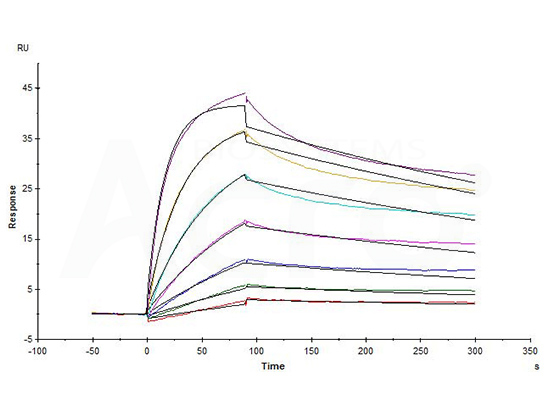
Biotinylated Human CD20 Full Length, His,Avitag (Cat. No. CD0-H82E5) captured on Biotin CAP-Series S Sensor Chip can bind Rituximab with an affinity constant of 1.73 nM as determined in a SPR assay (in presence of DDM and CHS) (Biacore T200) (QC tested).
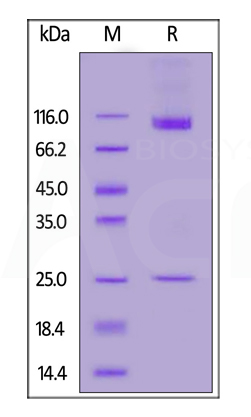
Human CD133 Full Length, His Tag (Nanodisc) (Cat. No. CD3-H52H1) on SDS-PAGE under reducing (R) condition. The gel was stained overnight with Coomassie Blue. The purity of the protein is greater than 90%.
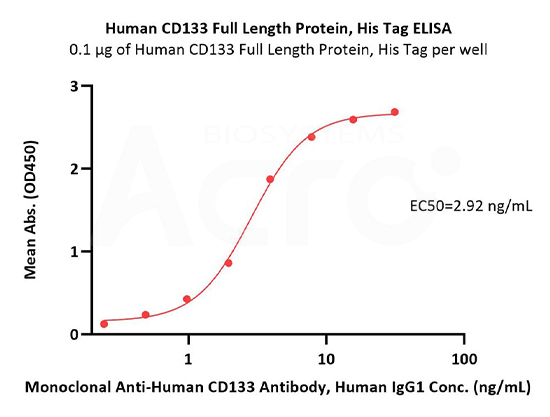
Immobilized Human CD133 Full Length Protein, His Tag (Cat. No. CD3-H52H1) at 1 μg/mL (100 μL/well) can bind Monoclonal Anti-Human CD133 Antibody, Human IgG1 with a linear range of 0.2-4 ng/mL (QC tested).

Our Claudin18.2 has been developed with VLP and DMM/CHS platforms. Both of these versions are suitable for immunization and screening. However, the VLP version may be preferred for improved immunogenicity. For accurate affinity measurements, we recommend using the DDM/CHS version (the detergent version).
Multi-pass transmembrane proteins span the cell membrane multiple times forming multiple extracellular domains. For example, Claudin18.2, CD20, and CD133 have two extracellular loops (ECLs) with each ECL having specific functions and interactions with each other. Full length can ensure that the protein conformation is biologically relevant while enabling the ECL to be completely exposed for improved screening of ideal antibodies. As the figure below illustrates, the full length is active and relevant compared to isolated extracellular domain. It is not the case that ACRO always emphasizes full length proteins, but drug discovery R&D work needs the full-length multi-pass transmembrane proteins. Indeed, when compared, the activity of only the ECL region is worse than that of the full-length protein. ACRO is committed to providing the high quality and relevant products that meet customers' needs.

The influence of non-specific antibodies cannot be ignored. Using membrane proteins under the VLP and Nanodisc platforms may produce non-specific antibodies. Both of our platforms have corresponding isotype controls for reverse-screening and excluding non-specific antibodies. Membrane protein-VLP has an isotype control product (Cat. No. VLP-NF2P4). Membrane protein-Nanodisc has two isotype control products, one of which is MSP1D1(Cat. No. APO-H51H3) as the isotype control for tag free version. If a biotinylated membrane protein-Nanodisc is used, MSP1D1(Cat. No. APO-H81Q5) can be used as the isotype control.

Nanodisc-membrane proteins are quite different from detergent stabilized membrane proteins. First of all, in principle, Nanodisc-membrane protein are assembled on native membrane-like structures and are completely detergent free. This opens up applications like immunization use for Nanodisc assembled proteins otherwise restricted due to detergent dissolving native cell membrane and causing damage to cells. In addition, the Nanodisc version of membrane proteins are compatible with cell-based assays and CAR expression detections. The Nanodisc platform used by ACRO has been authorized by the patent holder and can be used with confidence during the development process.
Claudin18.2-VLP is tested and verified by anti-Claudin18.2 specific antibodies. The purity is evaluated by SDS-PAGE/HPLC/DLS/SEM. The conventional negative dye EM cannot see whether Claudin18.2 is on the VLP due to its low resolution. Binding activity with anti-Claudin18.2 specific antibodies can confirm the presence of Claudin18.2 on the particles.
We currently store all VLP formulated products as liquids at -70°C and ship on dry ice. We do store non- enveloped VLP products by freeze-drying. VLP immunization mainly requires attention to the choice of adjuvant dose, because VLP itself can enhance immunogenicity, which is not the case for conventional protein products.
CD24 and PD-1 are soluble proteins. They are not multi-pass transmembrane proteins, so non-enveloped VLPs are used. While multi-transmembrane proteins have hydrophobic transmembrane regions and need to be embedded on the membrane of the enveloped VLPs. The difference between VLP and enveloped VLP is whether there is a phospholipid bilayer membrane on the surface of the VLP.
If customized, the membrane protein in VLP format is expected to take 6-8 weeks. The DDM/CHS version requires expression and purification conditions optimization of the target multi-pass transmembrane protein and detergent screening, so the development cycle is longer lasting more than 8 weeks. The customized Nanodisc version of membrane protein requires an additional 4 weeks on top of the DDM/CHS development time.
Authors: Lionel Rougé et al.
Journal: Science
Authors: Paige M. Glumac , Aaron M. LeBeau.
Journal: Glumac and LeBeau Clin Trans Med
Authors: Kenji Maeda, Debananda Das et al.
Journal: Journal of Biological Chemistry
Authors: Line Barington, Pia C. Rummel, et al.
Journal: Journal of Biological Chemistry
This web search service is supported by Google Inc.







